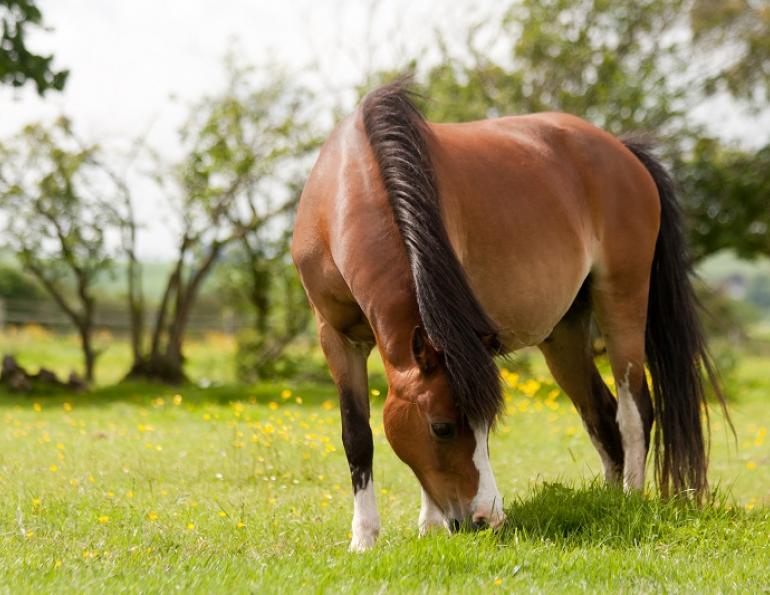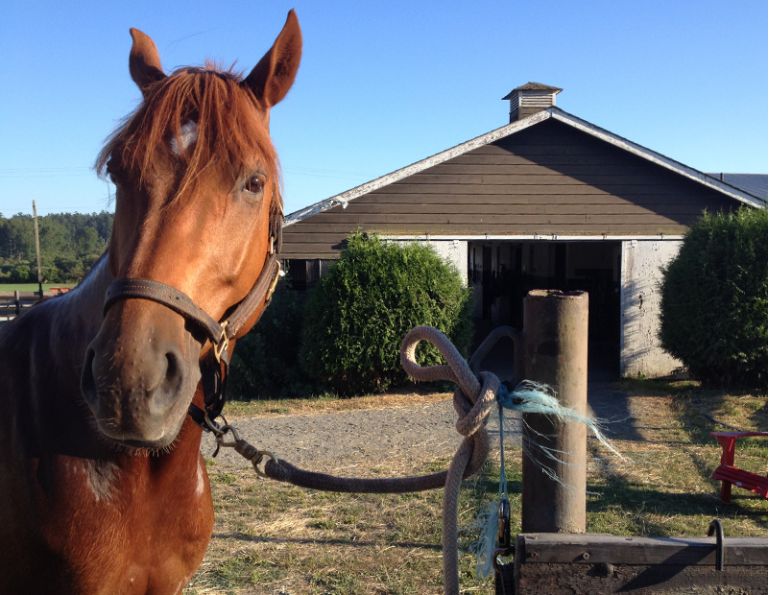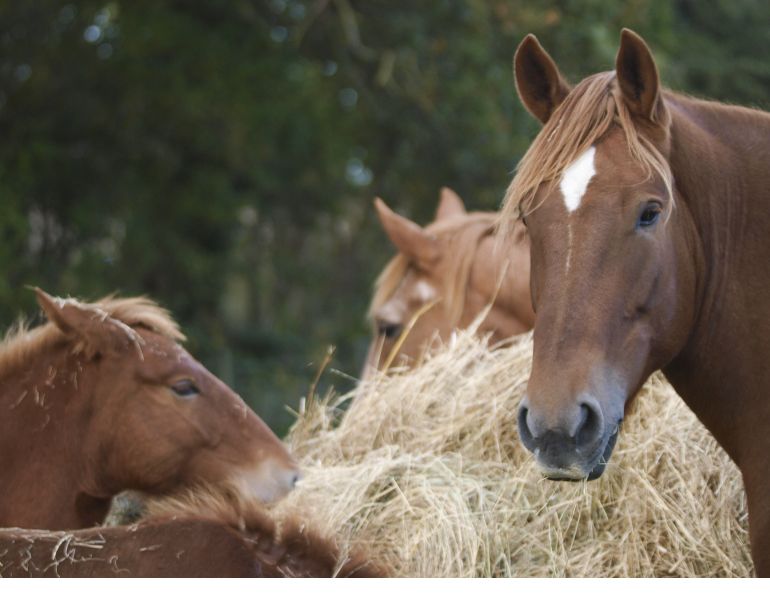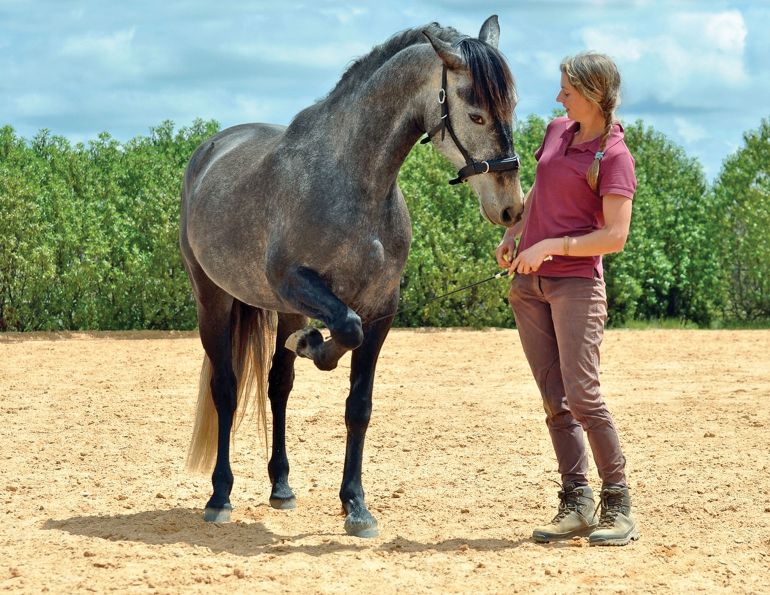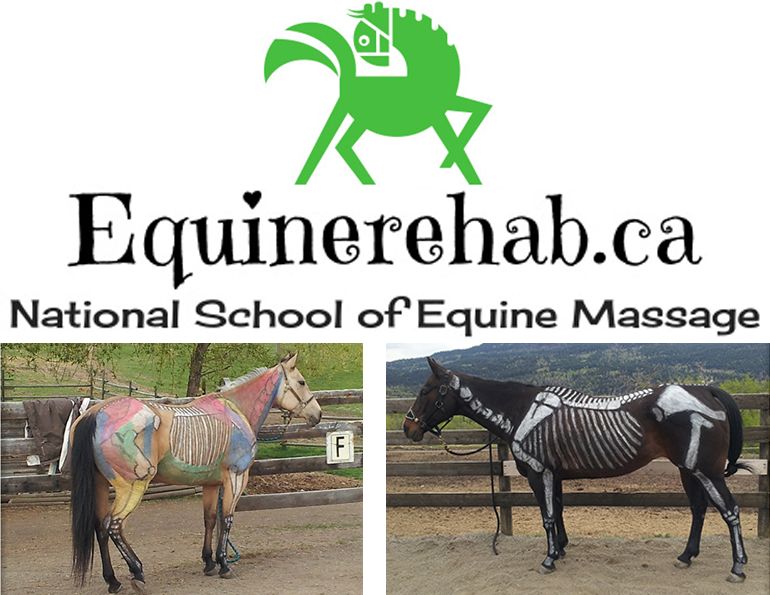4 Key Principles
By Jec A. Ballou
When the shorter, colder winter months settle in, brief but purposeful groundwork sessions become critical for a horse’s physiology. Granted, fitness-based groundwork will not keep a horse at peak performance level, but it will prevent total erosion of neuromuscular and metabolic fitness during times of abbreviated schedules. When consistently and strategically practiced, it improves muscle tone, basic metabolic function, and neuromuscular patterns.
In fact, evidence has shown that a large percentage of muscle activity can be maintained in non-ridden horses when groundwork sessions are performed six or more times per week for a period of 25 minutes or longer. A daily 25-minute bout of continuous movement at 40 percent of maximum heart rate is the minimal amount needed to retain a fitness base. For most horses this equals a rate of 90 beats per minute, attained at a brisk walk or easy jog as performed during groundwork.
At this rate, when done consistently, groundwork contributes to a horse’s athleticism in the following ways:
- Improve neuromuscular activation and coordination;
- Increase activity of sensory and motor nerves, awaken poorly recruited muscles;
- Strengthen postural muscle and ligament system;
- Improve balance, alignment, and joint flexion through practicing range-of-motion in a relaxed state.
Non-riding plans for horses aiming to maintain fitness rely on the following principles. Keep these in mind when moving beyond groundwork for burning energy or teaching skills to a means of measurable physical gains.
Related: How to Use Hills for Horse Training
1 - Consistency
Above all, fitness-based groundwork depends on consistency. Think of these daily doses of low intensity stimulus being bricks that stack up on each other to form a solid structure. Each brick relies on the placement of the previous ones. Similarly, low intensity activity like groundwork requires high frequency each week to affect physiology.

Results of fitness-based low-intensity groundwork depend on consistency and high frequency. Cumulative benefits result from walking exercises done for at least 30 minutes five or six days a week. Photo: Shutterstock/Erickson Stock
When practiced sporadically, physical gains will not be made, although it could arguably still benefit the horse’s mental state during periods of downtime. The benefit of this type of training is cumulative. No single session or set of exercises will bring results unless it is stacked on dozens of other ones. In other words, it will always be more fruitful to spend 25 to 30 minutes doing productive walking exercises five or more days per week versus allowing a horse to idle during the week and then longing him on Saturday until he puffs and drips sweats.
Related: Conditioning Your Horse During Downtime
Related: What Are Corrective Exercises for Horses?
2 - Variation
Your lines of travel should blend plenty of long straights with occasional bending and circles. In fact, circles should happen sparingly, carefully, and with purpose. Due to the unevenness of ground reaction forces on the horse’s limbs when circling, repetition of this practice leads to asymmetry in the horse’s back muscles, not to mention the stress to hoof structures. Given that our goal is to improve rather than detract from the horse’s locomotion, the use of circles is judicious. To avoid excessive repetitive circles, successful groundwork routines rely on handlers moving around and covering a fair amount of ground each session. I call this form of movement “controlled wandering” as the handler guides the horse along varying lines of travel.
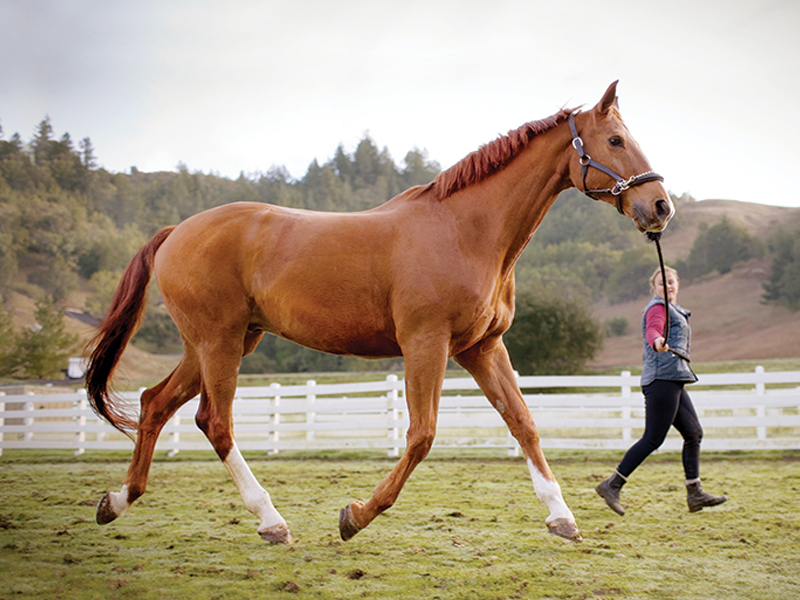
“Controlled wandering” or moving along varying lines of travel, including long straight lines, occasional bending, and circles, provides variation and causeS the horse to make postural adjustments. Photo: Shutterstock/Erickson Stock
These changing lines are not just about avoiding asymmetry and burning calories. Changing lines of travel frequently (from straight to circle, etc.) requires postural adjustments that make these sessions productive. For instance, you might choose to flow from walking a small circle to some leg-yield steps to a long straight line of slow jogging. You will find yourself moving all around your arena combining various figures and tasks without stopping in between or repeating anything ad nauseum.
3 - Range of Motion
Walk-only sessions can be quite engaging and lively; don’t let them become a slow shuffle or boredom-inducing affair. In addition to keeping the horse in that 40 percent of maximum heart rate zone, we want to keep his neuromuscular system awake. An easy way to heighten neuromotor activity and joint mobility is by changing speeds frequently, even within the walk. If a horse comes out and walks around with the same dull steps and speed daily, he is not going to make gains.
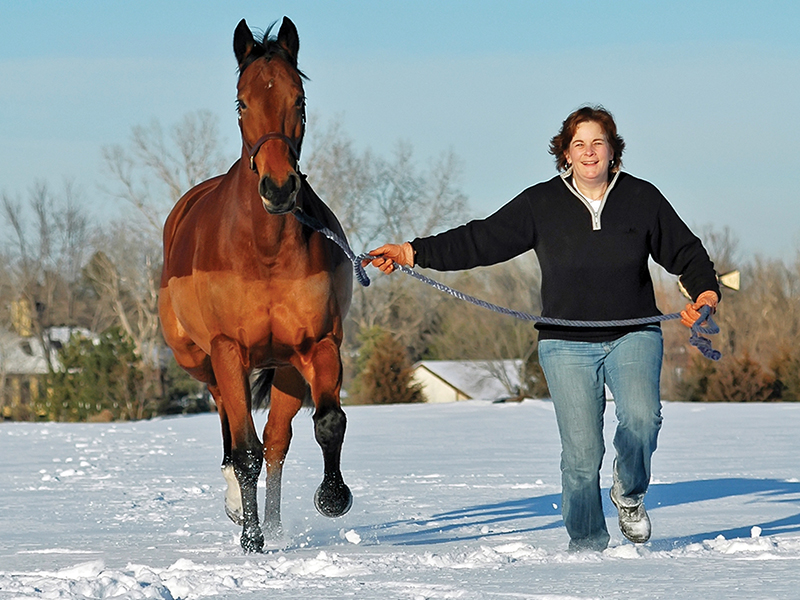
Time your workouts rather than estimating how long you’ve been at it, and keep moving. Shifting between different walking speeds and a slow jog will cause the horse to organize his body. Photo: Donna Kilday
Think instead about shifting him between different walking speeds (slow, regular, fast) every 30 seconds, or easing him up to a slow jog for a bit. These alterations in footfall cause him to organize his body, resulting in greater neurosensory input which in turn means better muscle fibre recruitment.
Related: Spring Conditioning Your Horse
Related: How to Train on the Trail
4 - Use a Clock
Walking for 30 minutes in the bitter cold can feel a lot longer than walking for the same length of time on a mild day with sunshine and birds chirping. In other words, estimations of time are often inaccurate. When it comes to your groundwork routines, set a timer rather than relying on your own guesswork. This will ensure you are making sufficient deposits in the consistency equation we discussed above.
Groundwork workouts also avoid prolonged pauses, aiming to keep the body mostly in motion. Simple as it sounds, do not stand around. Keep moving. Brief sessions are only effective when they consolidate stimulus and avoid long pauses. This does not mean that stationary bodywork techniques, jaw flexions, or periods of standing quietly are not beneficial to the horse. These types of activities are all excellent additions to the day if you have extra time. Once you start the clock on your groundwork session, do your best to keep the body in motion.
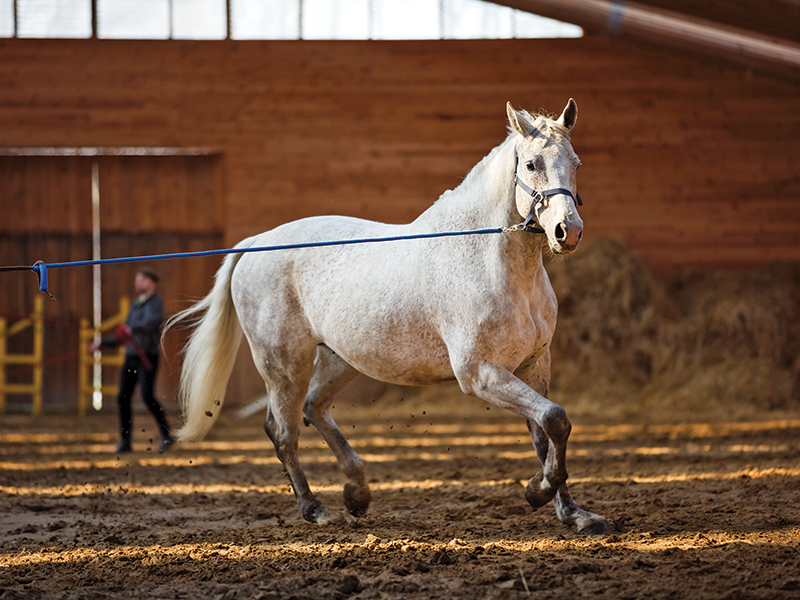
Circles should be large and used sparingly. Rather than repetitive circles, the handler should guide the horse by moving around the arena. Photo: iStock/Castenoid
Sample Fitness-Based Groundwork Routine
Below is a sample groundwork session that incorporates the principles above. It takes about 35 minutes to perform and can be performed pretty much anywhere with moderately level ground. Remember to avoid large pauses between each step; try to flow seamlessly through the tasks. This sample offers a template for creating your own sessions containing different exercises.
- Walk for 10 minutes on straight lines making speed changes every 15 strides (slow, medium, fast).
- Back the horse up 30 steps.
- For 2 minutes do walk-to-stop transitions (every 10 steps).
- Do 3 turns-on-the-forehand each direction (360-degrees).
- For 2 minutes do easy jogging, straight lines, big circles.
- Do 3 turns-on-the-haunches each direction (180-degrees).
- For 2 minutes walk briskly on straight lines.
- Repeat steps 4-6.
- For 2 minutes walk tight serpentines.
- For 30 seconds leg-yield each direction. Repeat twice.
Related: Creating an Equine Fitness Program
Related: BLOG: Focus and Fitness in Horses
Main Photo: Dreamstime/Donna Kilday




